THROUGH THE AGES
The Virtual Reality headset is a fascinating invention that allows us to delve into the virtual world head first!
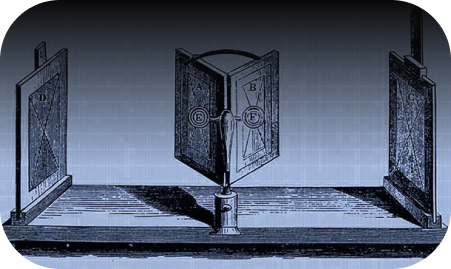
Sir Charles Wheatstone was the first to describe stereopsis in 1838. The research demonstrated that the brain combines two photographs (one eye viewing each) of the same object taken from different points to make the image appear to have a sense of depth and immersion.
This technology enabled Wheatstone to create the earliest type of stereoscope. It used a pair of mirrors at 45 degree angles to the user’s eyes, each reflecting a picture located off to the side.
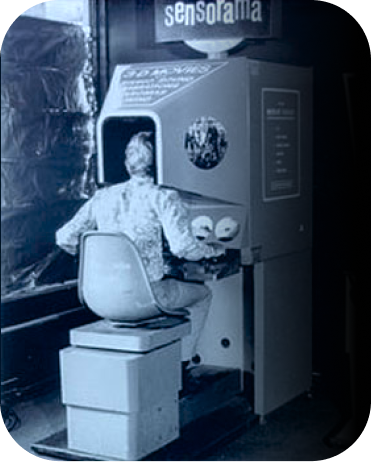
Cinematographer Morton Heilig created Sensorama, the first VR machine (patented in 1962). It was a large booth that could fit up to four people at a time. It combined multiple technologies to stimulate all of the senses: there was a combined full color 3D video, audio, vibrations, smell and atmospheric effects, such as wind.
This was done using scent producers, a vibrating chair, stereo speakers and a stereoscopic 3D screen. Heilig thought that the Sensorama was the “cinema of the future” and he wanted to fully immerse people in their films. Six short films were developed for it.
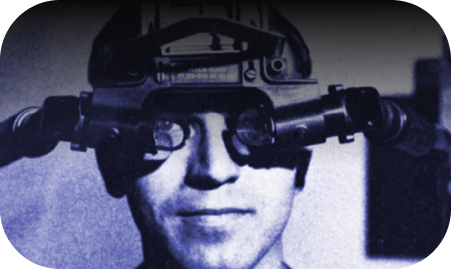
Sutherland, with his student Bob Sproull, created the first virtual reality HMD, named The Sword of Damocles. This head-mount connected to a computer rather than a camera and was quite primitive as it could only show simple virtual wire-frame shapes.
These 3D models changed perspective when the user moved their head due to the tracking system. It was never developed beyond a lab project because it was too heavy for users to comfortably wear; they had to be strapped in because it was suspended from the ceiling.
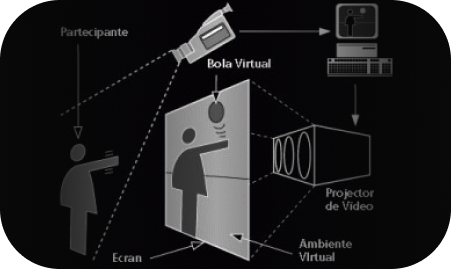
Krueger’s VIDEOPLACE, the first interactive VR platform, was displayed at the Milwaukee Art Center. It used computer graphics, projectors, video cameras, video displays and position-sensing technology and it didn’t use goggles or gloves. VIDEOPLACE consisted of dark rooms with large video screens to surround the user in “VR”.
The users could see their computer-generated silhouettes imitating their own movements and actions – the users’ movements were recorded on camera and transferred onto the silhouette. Also, users in different rooms could interact with other users’ silhouettes in the same virtual world. This encouraged the idea that people could communicate within a virtual world even if they weren’t physically close.
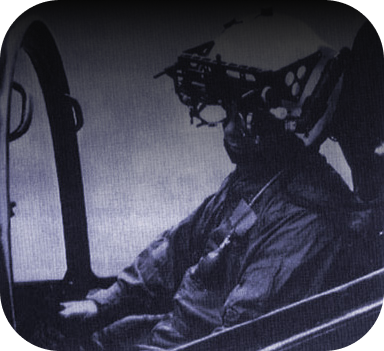
McDonnell-Douglas Corporation integrated VR into its HMD, the VITAL helmet, for military use. A head tracker in the HMD followed the pilot’s eye movements to match computer-generated images.
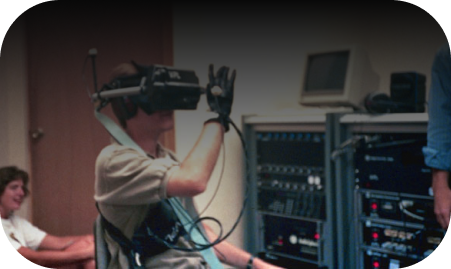
Jaron Lanier and Thomas Zimmerman founded VPL Research, Inc. This company is known as the first company to sell VR goggles and gloves. They developed a range of VR equipment, such as, the DataGlove, EyePhone HMD and the Audio Sphere.
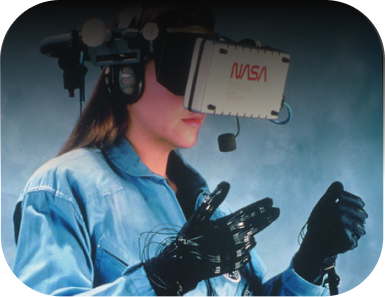
Scott Foster founded Crystal River Engineering Inc after receiving a contract from NASA to develop the audio element of the Virtual Environment Workstation Project (VIEW) – a VR training simulator for astronauts. Through this company real-time binaural 3D audio processing was developed.
Mattel, Inc released the Power Glove, based on VPL’s DataGlove. The Power Glove was a controller accessory for the Nintendo Entertainment System, but it never took off as it was difficult to use.
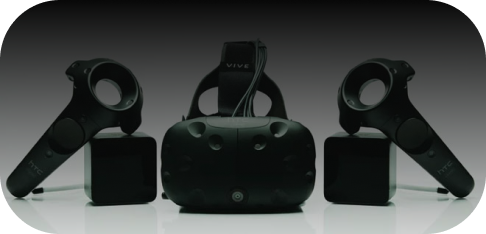
By 2016 hundreds of companies were developing VR products. Most of the headsets had dynamic binaural audio. Haptic interfaces were underdeveloped. Haptic interfaces are systems that allow humans to interact with a computer using their touch and movements – like the Gloveone gloves that were being developed. This meant that handsets were typically button-operated.
HTC released its HTC VIVE SteamVR headset. This was the first commercial release of a headset with sensor-based tracking which allowed users to move freely in a space.

Sir Charles Wheatstone was the first to describe stereopsis in 1838. The research demonstrated that the brain combines two photographs (one eye viewing each) of the same object taken from different points to make the image appear to have a sense of depth and immersion.
This technology enabled Wheatstone to create the earliest type of stereoscope. It used a pair of mirrors at 45 degree angles to the user’s eyes, each reflecting a picture located off to the side.

Cinematographer Morton Heilig created Sensorama, the first VR machine (patented in 1962). It was a large booth that could fit up to four people at a time. It combined multiple technologies to stimulate all of the senses: there was a combined full color 3D video, audio, vibrations, smell and atmospheric effects, such as wind.
This was done using scent producers, a vibrating chair, stereo speakers and a stereoscopic 3D screen. Heilig thought that the Sensorama was the “cinema of the future” and he wanted to fully immerse people in their films. Six short films were developed for it.

Sutherland, with his student Bob Sproull, created the first virtual reality HMD, named The Sword of Damocles. This head-mount connected to a computer rather than a camera and was quite primitive as it could only show simple virtual wire-frame shapes.
These 3D models changed perspective when the user moved their head due to the tracking system. It was never developed beyond a lab project because it was too heavy for users to comfortably wear; they had to be strapped in because it was suspended from the ceiling.

Krueger’s VIDEOPLACE, the first interactive VR platform, was displayed at the Milwaukee Art Center. It used computer graphics, projectors, video cameras, video displays and position-sensing technology and it didn’t use goggles or gloves. VIDEOPLACE consisted of dark rooms with large video screens to surround the user in “VR”.
The users could see their computer-generated silhouettes imitating their own movements and actions – the users’ movements were recorded on camera and transferred onto the silhouette. Also, users in different rooms could interact with other users’ silhouettes in the same virtual world. This encouraged the idea that people could communicate within a virtual world even if they weren’t physically close.

McDonnell-Douglas Corporation integrated VR into its HMD, the VITAL helmet, for military use. A head tracker in the HMD followed the pilot’s eye movements to match computer-generated images.

Jaron Lanier and Thomas Zimmerman founded VPL Research, Inc. This company is known as the first company to sell VR goggles and gloves. They developed a range of VR equipment, such as, the DataGlove, EyePhone HMD and the Audio Sphere.

Scott Foster founded Crystal River Engineering Inc after receiving a contract from NASA to develop the audio element of the Virtual Environment Workstation Project (VIEW) – a VR training simulator for astronauts. Through this company real-time binaural 3D audio processing was developed.
Mattel, Inc released the Power Glove, based on VPL’s DataGlove. The Power Glove was a controller accessory for the Nintendo Entertainment System, but it never took off as it was difficult to use.

By 2016 hundreds of companies were developing VR products. Most of the headsets had dynamic binaural audio. Haptic interfaces were underdeveloped. Haptic interfaces are systems that allow humans to interact with a computer using their touch and movements – like the Gloveone gloves that were being developed. This meant that handsets were typically button-operated.
HTC released its HTC VIVE SteamVR headset. This was the first commercial release of a headset with sensor-based tracking which allowed users to move freely in a space.

